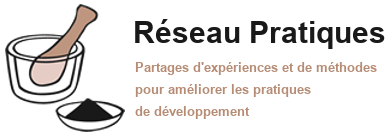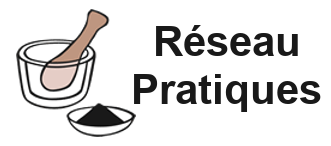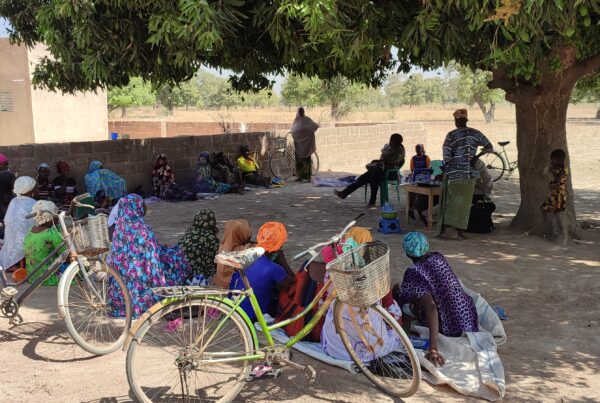1 Executive summary
This impact study has tried to answer the following questions:
• Do Health mutual fund services improve the standard living level of the family when it is given additionally to a micro loan (through the Income generation programme)?
• What difference these additional services brings to a family? The study has been conducted in the NGO partner of Inter Aide Parvati Swayamrojgar over a sample of 285 persons with the methodology of one experimental group (IGP + HMF group) and one control group (IGP group).
We have randomly selected 2 comparable groups on 3 main criteria. We have not found socio economic difference between the 2 groups (and controlling for other factors such as the loan cycle or the HMF year), because there may not be any, or because the study still has some limitations (no real temporal dimension for instance).
We have found out that our two groups have:
- similar accumulated saving amount throughout the year,
- Equivalent socio economic conditions (we can‘t say that one group is richer or
poorer that the other), related monthly per capita expenditure as well as food habits.
Furthermore, we have observed that there is no disparity as regards as the health status between the 2 groups given by the health score. At last, we have also noticed that our sample is particularly vulnerable since a substantial proportion of members declared suffering from diseases and/or being affected by accidents, and almost half of the sample has a tobacco addiction.
Beside those similarities among the groups, we found significant differences between the two groups on different dimensions. Those aspects indicate certain impact on a long run which shows that HMF programme may improve the economic stability and hence the long term socio economic conditions of the insured families. But this trend still needs to be confirmed with a deeper longitudinal study over the time on several years.
Being an insured member in addition of being a borrower made a difference in terms of:
Access to health care and health coverage: The noteworthy findings relates to the fact that HMF reaches, in Parvati, population who actually needs insurance and health coverage. Indeed, it appears from the data that there are more members in IGP + HMF group who faced more incidences of illness and accident than the IGP group. This factual observation means that when a family has a lot of health problems,
members opt for a health insurance and confirm the general truth that the insured have propensity to consume more health services. Furthermore, it also indicates some moral hazard in the selection of members but as 85% of total on going borrowers in Parvati takes HMF, there would still be some significant pooling of the risk. Hence, without deliberate strategy on selecting members, HMF reaches population who actually needs insurance and health coverage which is a positive achievement for the programme.
Economic stability in the family for insured members: the members from IGP +HMF show less tendency in missing loan installment.
Higher awareness on the importance of health : It seems that the consistent and regular awareness on importance of health for a family through dedicated field staff, health camp, health talk, referral services, easier access to OPD doctors motivate the member to pay attention to their health by availing apropriate medical services
Impact on saving behaviour: With equal saving capacity, the number of savers almost doubled in IGP + HMF group and the saving capacity of insured members increased by 60 %.The families can save a lot of money due to concessional treatment at network Health care provider which can spare with them a sufficient amount of money to be kept aside as saving. However, HMF programme is of course not the direct cause of a better management of family budget but awareness of health may create an indirect positive consequence on prioritization of expenses and saving discipline.
Improvement of the health status of the family: If the health score is similar for both groups, the number of HMF years has a positive and significant influence on the health status of the population which mean that HMF improves the health status of its population on a long term. Nevertheless, we know that there is always other biases and to be able to control them all, we should go even further in the statistical models.
Furthermore, this positive impact should be put into the perspective of the limitation of the health indicator whose calculation still reflects limitations.
The second part of the study was dedicated to the qualitative analysis of the service through a satisfaction survey. This qualitative analysis may suffer from certain limitations: the interviewed partners may have given “expected” and “politically correct” answers, since they are all on-going borrowers or beneficiaries of the projects. Regarding IGP services, a majority of members expressed a degree of satisfaction. As long as HMF non financial services are concerned, on average 18 % of the members who declared falling sick have used the network service. From the data, OPD network doctor is the most used service. The referral service to network hospitals could be improved.
At last, we have taken the opportunity of this study to test the standard of living level tool currently used. We have built and tested a new tool on purpose for this study based on objectives factors such as fixed asset own by the family and the global housing conditions.
For 4 parameters out of 7 from the Standard of living level tool of Inter Aide, namely education, financial link (saving), food, health, we observed that the result are not precise enough. For those dimensions, the tool allocates in a very different way the population across the 7 poverty levels compared to the quintile allocation from the socio economic indicator built for the study. This research is then an opportunity to revise the Inter Aide tool and simplify it to provide more accurate result in the future based on objective and measurable variables.



